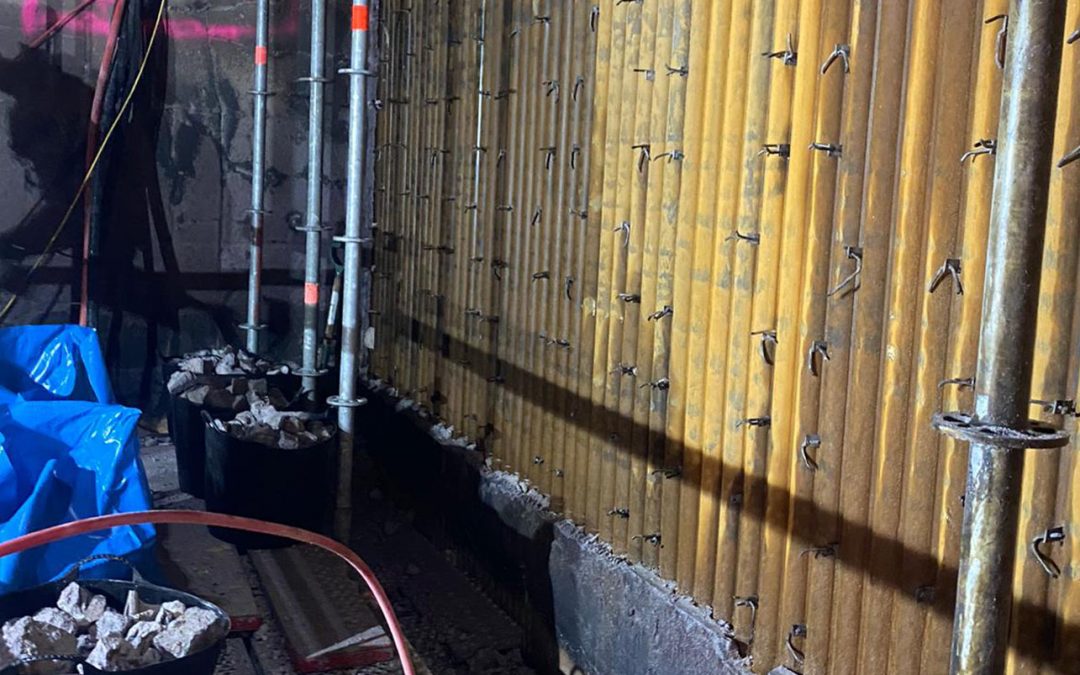Using an ultra-high pressure water jetting robot to remove refractory from a biomass furnace has allowed its operator to resume power generation quickly and efficiently.
Removing the heat-resistant material using ultra high pressure water jetting proved quicker and more effective than the alternative of mechanical demolition.
We removed 110m2 of refractory at the biomass energy plant located at a cardboard paper mill in Workington, Cumbria, in nine 12-hour shifts, a day ahead of schedule.
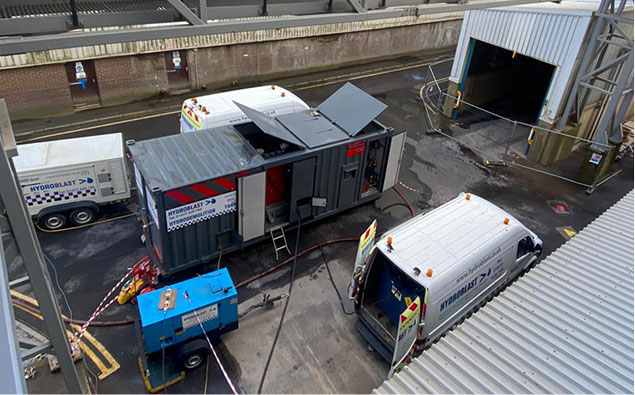
Our company’s Operations Director, Ross McDonald, said: “The conventional method for removing refractory is to use hand-held mechanical breakers.
“This approach greatly increases the risk of damaging the furnace and could not be completed in the timeframe we achieved with just three personnel per shift.
“On top of that, using breakers exposes operatives to heightened risk of hand arm vibration injury, which is eliminated with remote controlled robotic hydrodemolition, and to hearing loss.
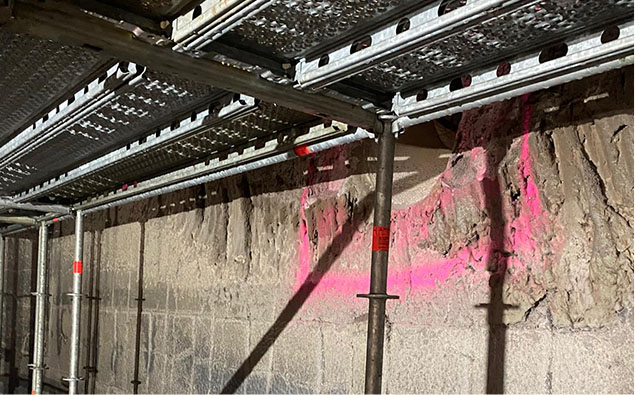
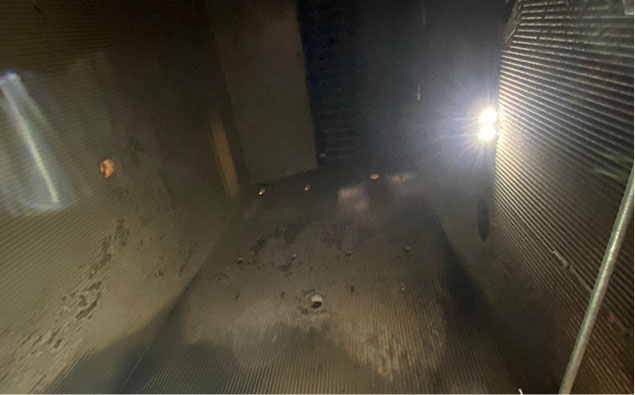
The equipment was passed through a 600mm diameter access hatch into the furnace, where a scaffold work platform had been installed above the burners located across the floor.
The water jet frame was attached to scaffolding erected to Hydroblast’s specification and allowed a 3m-wide section of refractory to be removed at a time.
A very fine jet, called a pencil jet, delivered water at 2200bar (31,900psi) with a flow rate of 90 litres per minute onto the refractory in pre-programmed sweeps.
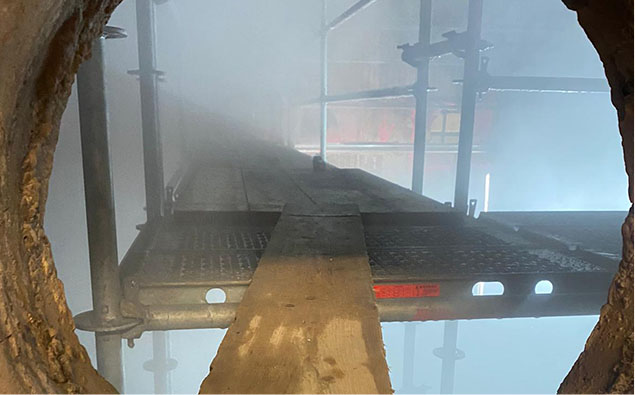
Waste material was removed by the biomass energy plant’s own personnel after each section had been water jetted and the next one was being set up.
Ross McDonald said: “Another significant benefit of hydrodemolition is that the water jet is very efficient. It takes the furnace wall back to bare metal so very little surface preparation is needed before the new refractory is applied.”
Hydroblast is a UK leader in the use of robotic water jet systems which can deliver significant benefits over conventional hand-held lance water jetting.
Using the semi-automated water jetting systems, as they are also called, moves the operative away from the water jet, enhancing safety. For many repetitive tasks, refractory removal being one, robotic jetting is often more productive.

